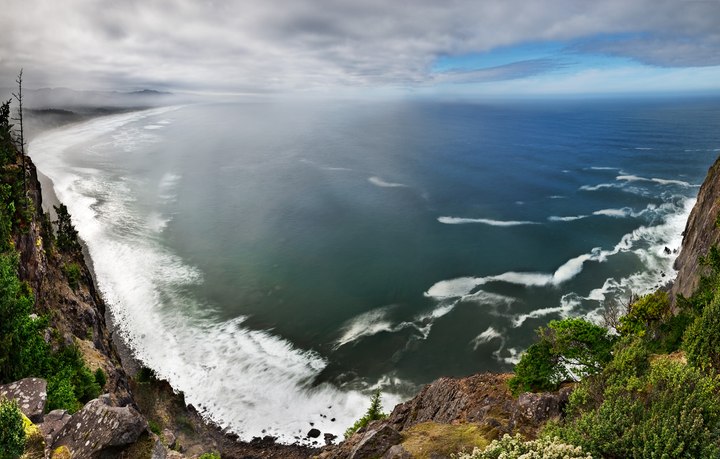The road north of Manzanita on Oregon’s northern coast curves around sharp bends high above the ocean. The overlooks can only be fully appreciated when leaning over the edge of the rock walls to experience the full horizontal sweep and vertical depth of the views. Here, waves generated across thousands of miles of the Pacific crash onto the shore in a steady rhythm of breaking swells, where the fog-bound coast meets a radiantly blue ocean and sky.
Oregon’s cold seawater is constantly upwelling, bringing nutrients as phytoplankton. These tiny one-celled organisms have a type of glue that holds them together, and when they die, their skeletal remains release that substance. At the same time, crashing waves push air into this frothy mix, and when it bubbles up, the shore is rimmed with sea foam. Although ocean foam can sometimes be associated with toxic blooms, along this shore, it indicates a healthy ecosystem.
Neahkahnie Mountain—meaning “the place of god” from the language of the Tillamook tribe—is one of the tallest headlands on the Pacific coast. Along the base of this 1,700-foot-high basalt formation ran an ancient trail that, during the 20th century, became a two-lane highway with a line of turnoffs beneath the mountain’s peak, each a few hundred feet above the ocean.
This panorama shows part of the coastline Sir Francis Drake explored in 1577, where subsequent shipwrecks have been scattered across the near shore. Legend has it that treasure was buried somewhere on this mountain’s slopes, but it remains undiscovered.

